In the ever-evolving landscape of education, the focus is shifting towards student-centered learning, an approach that places the learner at the heart of the educational experience.
For upper elementary teachers, adopting student-centered strategies not only enhances engagement but also nurtures critical thinking skills and a love for learning!
It can be a difficult transition, but learning to be a facilitator to our students’ learning is so beneficial! For students and teachers. Being a facilitator in the classroom refers to the role of a teacher as a guide, organizer, and supporter of the learning process rather than a traditional lecturer or authoritarian figure. Of course, we still provide support and feedback:
- Encouraging Participation: Facilitators strive to engage students actively in the learning process. This can involve discussions, group activities, hands-on projects, and other interactive methods that go beyond passive listening.
- Clarifying Concepts: Instead of simply presenting information, facilitators help students understand concepts by providing guidance and support. This may involve answering questions, offering explanations, or directing students to relevant resources.
- Stimulating Critical Thinking: Facilitators pose open-ended questions that encourage students to think critically, analyze information, and express their opinions. This approach fosters a deeper understanding of the subject matter.
- Empowering Students: Facilitators empower students to take ownership of their learning. This may involve allowing them to make choices about assignments, encouraging independent research, and promoting self-directed projects.

In this blog post, we will explore various student-centered learning methods tailored for upper elementary classrooms.
Student Choice Assignments:
Offering a range of assignment options related to a particular topic empowers students to choose tasks that align with their interests or strengths. This approach fosters a sense of ownership and motivation among students.
- Assignment Options: Present a variety of assignment options, such as written essays, presentations, artistic projects, or even hands-on activities. This allows students to showcase their understanding in a way that resonates with their preferred learning style.
- Tailored Learning Experience: Recognize and accommodate diverse learning preferences. By providing choice, teachers acknowledge that students have unique strengths and preferences, promoting a more inclusive and supportive learning environment.
- Ownership and Motivation: When students have a say in their assignments, they feel a sense of ownership. This ownership, in turn, fuels intrinsic motivation, as students are more likely to invest time and effort into tasks they find meaningful.
Flipped Classroom Activities:
The flipped classroom model involves sharing educational content, such as video lectures, for homework, and using class time for discussions, problem-solving, and hands-on activities. This approach accommodates different learning paces and styles. I love this strategy and have used it in many grade levels – even when I was teaching first grade!
If we give our students the right tools and information, they are capable of leading meaningful discussions and learning experiences.
- Self-Paced Learning: By providing video lectures or online resources for homework, students can learn at their own pace. This accommodates varying levels of comprehension and ensures that each student has a solid foundation before engaging in class activities. This can be done during class time too! Especially if you have a longer block to work with – dedicate the first 15-20 minutes to learning and then meet for discussion.
- Active Learning in Class: Class time becomes an opportunity for interactive, application-based learning. Students can delve into discussions, participate in problem-solving activities, and seek clarification on concepts they found challenging during their self-paced learning.

Student-Centered Learning Stations:
Learning stations involve creating different areas or activities related to the lesson. Students rotate through these stations, choosing the order and pace that suits their learning style. This method encourages autonomy and accommodates diverse learning preferences.
Different learning stations can cater to various learning styles – from hands-on activities to reading materials or multimedia presentations. This diversity ensures that each student finds a station that resonates with their preferred mode of learning. Inside the Stellar Literacy Collective, we have a library full of resources that are great for stations – Sentence Writing Routine, graphic organizers, grammar activities and more!
Allowing students to choose the order in which they visit stations promotes autonomy. This sense of control over their learning environment contributes to a positive and empowering educational experience.
Student-Led Discussions:
Empowering students to take the lead in class discussions promotes autonomy, responsibility, and critical thinking skills. Teachers can provide guiding questions and let students explore and share their perspectives.
- Guiding Questions: Pose open-ended questions that encourage critical thinking and discussion. These questions should prompt students to analyze, evaluate, and articulate their thoughts.
- Facilitating Rather than Dictating: Act as a facilitator rather than a lecturer during discussions. This approach allows students to express their ideas freely, promoting a more inclusive and dynamic learning environment.
- Accountability and Responsibility: Student-led discussions foster a sense of accountability and responsibility. As students take charge of their learning, they develop essential skills such as communication, collaboration, and the ability to articulate their thoughts effectively. Setting expectations and roles for student-led discussions will help make them more meaningful.
Ideas for Student Roles During Discussions:
- Facilitator or Discussion Leader: Responsible for guiding the discussion. Introduces the topic, sets ground rules, and keeps the conversation on track. Encourages participation from all group members.
- Note Taker or Recorder: Records key ideas, insights, and questions discussed during the conversation. Takes brief notes on each participant’s contributions.
- Timekeeper: Monitors the time to ensure that the discussion stays within the allocated time frame. Gives periodic reminders about how much time is remaining for different segments of the discussion. Helps manage the pacing of the conversation.
- Questioner: Prepares a set of thought-provoking questions related to the discussion topic. These can also be given by the teacher.
- Summarizer: Listens actively to contributions and identifies key points. Summarizes the main ideas and conclusions reached during the discussion. Presents a concise overview at the end to ensure clarity.
In embracing student-centered learning, you can create a vibrant and dynamic classroom environment that caters to the diverse needs and preferences of their students. Student-centered learning not only cultivates critical thinking, problem-solving, and collaboration skills but also instills a lifelong love for learning.
Grab Your FREE Gift!
Book Club Agendas
These book club agendas will keep your student discussions focused and on-track with these book club agendas! These are great to use to keep your students accountable during book talks.
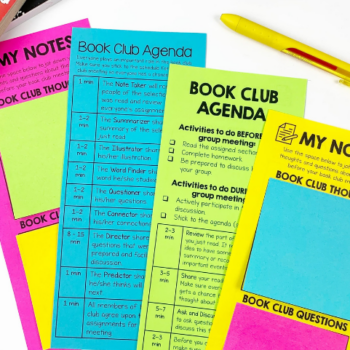
Think about your next steps…
- Challenge: Choose one of the student-centered learning opportunities to try in your classroom as soon as next week!
- Check out Episode #135 of the The Stellar Teacher Podcast to learn more about implementing structured student partnerships in your classroom and how it can provide students daily opportunities to work and practice literacy skills with a trusted peer.
- Join us inside The Stellar Literacy Collective, where you will get access to a resource library filled with reading and writing resources that will help support you and your students get the most out of your literacy block.
Happy Teaching!


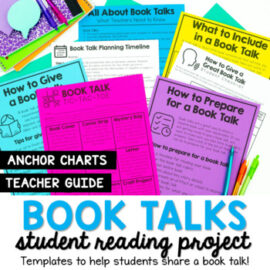
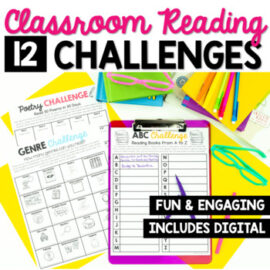
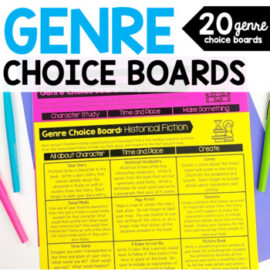

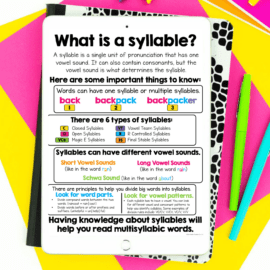










Leave a Comment
You must be logged in to post a comment.